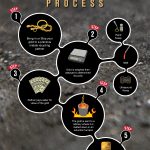From an industrial standpoint, platinum is tough stuff. It has excellent resistance to corrosion, has stable electrical properties, and is stable at high temperatures. How high? Platinum’s melting point is 3214.9 °F. If you’re tooling around with heat, platinum is your go-to metal. That’s why it’s a critical element in all things glassmaking.
 Glassmaking materials are heated in excess of 3000 °F. This means that the tools and vessels that hold, channel, and form the molten glass must be extremely heat resistant. Fortunately, platinum and platinum alloys do not oxidize or scale at high temperatures. Some glassmaking applications use platinum-rhodium alloy for added resistance to corrosion at high temperatures.
Glassmaking materials are heated in excess of 3000 °F. This means that the tools and vessels that hold, channel, and form the molten glass must be extremely heat resistant. Fortunately, platinum and platinum alloys do not oxidize or scale at high temperatures. Some glassmaking applications use platinum-rhodium alloy for added resistance to corrosion at high temperatures.
One of the most “platinum-intensive” types of glassmaking is for reinforcement glass fiber. Molten glass is held in a platinum-rhodium container. The base of the container has precision shaped holes through which the glass is drawn to create extremely thin fibers. The glass fibers are used to reinforce other material types, like glass reinforced plastic, aka Fiberglass.
However, some glassmaking processes require pure platinum – such as those for optical and ophthalmic glass. These types of glass are used for telescopes, binoculars, eyeglasses, etc. As such, they must be perfectly clear and free of defects. During heat treatment, rhodium may add unwanted color to the glass. Since pure platinum won’t react with molten glass, that makes it the material of choice for creating perfectly clear lenses.











